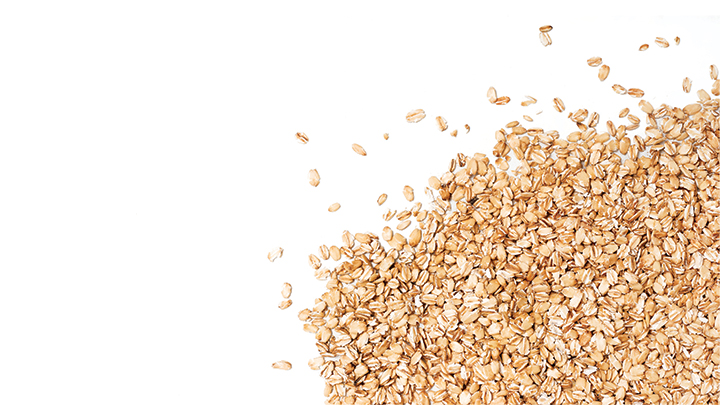Which wholegrains are best?
May 1, 2018

It’s commonly known that wholemeal or wholegrain products are healthier than white, refined versions. But is smooth wholemeal bread just as healthy as cooked barley or steel-cut oats?
Wholegrains for health
Research suggests that people who eat wholegrain foods regularly have a 20-30 per cent reduced risk of chronic diseases such as type 2 diabetes, heart disease and colon cancer.
But even among wholegrain foods, there appears to be a hierarchy. Some food forms allow for better control of your blood sugar and insulin, which is important, as constantly spiking your sugar and insulin levels during the day is now known to promote disease, even if you don’t have diabetes!
The best forms
Wholegrains can be processed to varying degrees. Clinical studies show the best forms of grains to use are intact, cracked or rolled (in that order) rather than puffed, flaked or finely ground flour. Think pearled barley for your risotto, bulgur wheat for a pilaff rather than muffins made with wholemeal flour or puffed brown rice cakes (even though they are low fat).
The reason? The less ground up the food form, and the smaller the surface area, the longer it takes for the carbohydrate to be digested by your amylase enzymes and the slower the rise in your blood sugar and insulin levels after eating such foods.
Other preparation tricks
Don’t soak your grains (especially rice), as this helps gelatinise the starch and make it quicker to digest and release sugar into your bloodstream!
Cook your wholegrains in the minimal amount of water required so they are al dente, like the Italians cook pasta, rather than very soft cooked. Wholegrains cooked this way are digested more slowly, protecting you from insulin surges.
After cooking, cool your wholegrains (or any carbohydrate foods, such as potato) and use the next day. Even if you re-heat such foods, the carbohydrate is more resistant to digestion (called resistant starch), enabling a slower rise in your blood sugar. And you win!
Porridge slices
Love oats but need a change from Bircher or making porridge daily? Try this time-saving Scottish idea to cook once and enjoy porridge every day of the week!
Preparation: 2 mins | Cooking: 10 mins | Serves: 8
Ingredients
- 2 cups rolled oats
- 8 tbsp ground linseeds
- ¼ cup currants
- ¼ tsp ground cinnamon
Method
- Place all ingredients into a large saucepan. Add 6 cups of water then cover with lid and bring to the boil, stirring occasionally.
- Turn down heat and cook oats for 5 minutes until thickened, stirring every so often.
- Pour into a large baking dish (approximately 22 cm x 32 cm) and allow to cool, then refrigerate. Cut into 8 squares and serve with milk or as you would usually enjoy porridge. Enjoy chilled or re-heat squares in the microwave. Recipe stores well in the fridge for up to a week.
PER SERVE: energy 675 kJ (161 cal); protein 5 g; fat 8 g; saturated fat 1 g; cholesterol 0 mg; carbohydrate 15 g; fibre 6 g; calcium 49 mg; iron 1.7 mg; sodium 7 mg.








